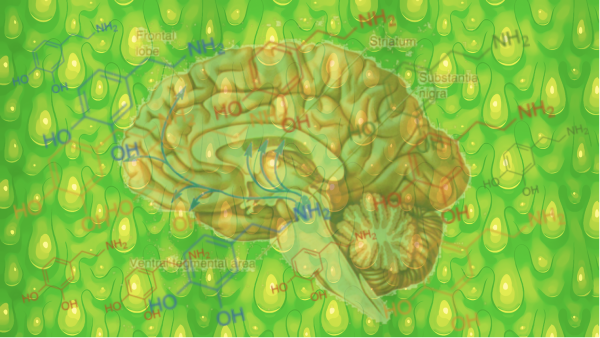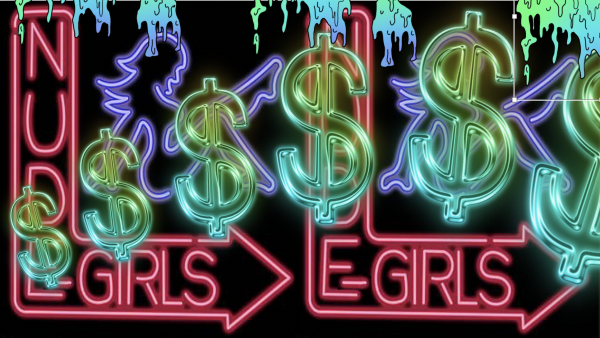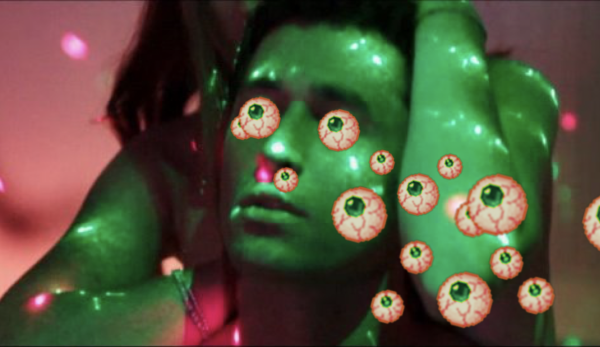Perversion can never be stripped of shame.
The Problem of Tolerance—and a Cure

How to find our way out from our culture-wide sex addiction.
The need for tolerance has been dinned into our ears without ceasing for some time, usually as a way to enforce our silence concerning the latest advance of the sexual revolution. We are told that there can be no principled disagreement with this revolution, and so all disagreement must be unprincipled—either the result of some irrational phobia or some irredeemably vicious worldview. And so, we who oppose it are pasted with shameful labels. We are hounded into silence, and hence forced to be “tolerant,” as civilization crumbles into increasing sexual anarchy and confusion.
That’s a real problem for all of us who (try to) stand in principled opposition—mainly, those beholden to the Judeo-Christian understanding of our sexual nature, as well as anyone defending the natural standards of sexuality evident in our biology.
Helen Andrews has given us a chilling account of the rate of this crumbling, as accelerated by technology both in volume and in ever-increasing defiance of any natural standard. As she rightly points out, cobbling together feeble definitions to try to separate porn from non-porn is entirely ineffective in our historically unprecedented situation. To invoke “utterly without redeeming social value” against the current tsunami of porn is about as effective as handing out umbrellas in a real tsunami. Ditto with the Supreme Court’s addition, “whether the average person applying contemporary community standards” finds it arousing and offensive. They are ineffective precisely because of the cumulatively degrading effects of the porn on our judgments about what has social value and what is offensive. Porn is continually washing away community standards—that’s how it makes so much money.
And so, amidst the carnal carnage we are told to be tolerant. Nothing can be done.
On the contrary. I suggest the following cure. We don’t need a new definition of pornography. We need an entirely new definition of tolerance, one that helps us out of our current situation and even explains how we got here. Happily, one already exists. Unlike the reigning popular version, this definition of tolerance is scientific, and so it will take a little explaining. To keep the two definitions distinct in readers’ minds, I’ll always italicize the scientific understanding of tolerance and keep the popular view of tolerance unitalicized.
For scientists studying human bodily and psychological health—in particular, addictions—tolerance is a technical term, one related to pleasure-seeking. Pleasure-seeking isn’t, as such, bad. In fact, it is quite natural and necessary. A Harvard Mental Health Newsletter from 2011 explains (as I summarize in my book, In Defense of Nature):
In the brain, pleasure has a distinct signature: the release of the neurotransmitter dopamine in the nucleus accumbens, a cluster of nerve cells lying underneath the cerebral cortex. Dopamine release in the nucleus accumbens is so consistently tied with pleasure that neuroscientists refer to the region as the brain’s pleasure center…. [D]opamine interacts with another neurotransmitter, glutamate, to take over the brain’s system of reward-related learning. This system has an important role in sustaining life because it links activities needed for human survival (such as eating and sex) with pleasure and reward…. The reward circuit in the brain includes areas involved with motivation and memory as well as with pleasure. Addictive substances and behaviors stimulate the same circuit—and then overload it.
Overloading is bad. Note that it occurs when we cast aside pleasure as it’s naturally related to human survival, and throw ourselves into the unnatural passionate pursuit of pleasure for its own sake. And that is where tolerance comes in. To continue my summary from the Harvard newsletter (emphasis added):
In a person who becomes addicted, brain receptors become overwhelmed. The brain responds by producing less dopamine or eliminating dopamine receptors—an adaptation similar to turning the volume down on a loudspeaker when noise becomes too loud. As a result of these adaptations, dopamine has less impact on the brain’s reward center. People who develop an addiction typically find that, in time, the desired substance no longer gives them as much pleasure. They have to take more of it to obtain the same dopamine “high” because their brains have adapted—an effect known as tolerance.
On this technical understanding, tolerance is a sign of damage. It isn’t good. It isn’t a virtue. Instead, it’s a sign that we have thrown ourselves into pleasurable stimulation to such unnatural excess that we set ourselves up in a cycle of unnatural self-destruction, seeking ever greater “hits” to achieve ever diminishing results.
Four Hallmarks of Tolerance
This pattern of tolerance explains our current problems with porn addiction. Masturbating while staring at sexual images on the screen is about as far away as one can get from the natural goal of sexual pleasure integral to sexual intercourse that is aimed at human survival, and so its habitual indulgence results in tolerance to stimuli, which in turn drives the viewer to more intense stimuli to override the tolerance, and so on, to ever-increasing addiction.
Here, tolerance is evidence of four related kinds of disorder:
First, repeated exposure to porn makes its viewers seek pleasure ever more passionately but simultaneously dulls the feeling of that pleasure, so that ever more bizarre and unnatural stimuli are needed for the fix. Hence the real meaning of “hard porn.” The porn-addicted has quite literally ruined the natural desire for actual heterosexual intercourse and so must descend into the unnatural, going from soft to harder and harder porn.
The result, as Helen Andrews made morbidly clear, is manifest in the internet’s increasingly unnatural offerings, which respond to the demands of viewers: sex with any gender combination, including transgender; anal sex; sex with animals; sex involving participants wearing diapers; sex involving feces or urine; amputee sex; sex involving choking and vomiting, brutal sadism, torture, rape, and even murder; cartoon pornography and child pornography; and finally, computer generated virtual sex of any and every unnatural, and previously unimaginable kind.
Second, the addicted quite literally destroy their biological capacity to choose. “Virtually every study on addiction has demonstrated atrophy of multiple areas of the brain,” notes researcher Dr. Donald Hilton in a 2013 study, “particularly those associated with frontal volitional control and the reward-salience centers.”
The atrophy of frontal volitional control means an increasing incapacity to choose one’s actions, which is why Dr. Nora Volkow of the National Institute on Drug Abuse called addiction “a disease of the brain,” destroying the freedom of our will, and so a disease “characterized by an expanding cycle of dysfunction…”As for the atrophy of reward-salience centers: our brain is designed to pay attention to what in the environment will enhance our survival. When this design is compromised by addiction, Hilton explains, the addicted are motivated by what is “clearly harmful” instead of what will enhance survival.
But that leads us to a third kind of disorder: evident physical and psychological damage. Porn addiction is so widespread as to be considered epidemic, and hence the associated dysfunctions now define all too many people. As a result, the porn-soaked West is afflicted with unprecedented rates of Erectile Dysfunction (ED) among men of all ages, but especially the young. And that’s not all. The porn-addicted also suffer from excessive irritability, fatigue, sleeplessness, trembling, inability to focus or concentrate, depression, completely deadened libido, significant social awkwardness, loss of job or flunking in school, the development of ever-more alarming sexual tastes but the inability to combat them, panic attacks, memory impairment, and thoughts of suicide.
Fourth, there is cultural disorder. As with all those who are addicted, the porn-addicted see the world through their own dysfunction. Because of tolerance in the scientific sense, they no longer see natural sex as desirable because they no longer feel natural sex as a source of pleasure. Understood this way, the presence of ever-increasing sexual tolerance in our society is a condition demonstrably destructive of our nature, and at odds with the Judeo-Christian account of human sexuality and its proper moral goal. That is not a coincidence, but a demonstration of the fact, uncomfortable to many, that there is such a thing as a proper moral goal and it has been under attack for quite some time. As researchers Jennifer Riemersma and Michael Sytsma note in their article “A New Generation of Sexual Addiction” (2013),
Cultural sexual mores in the United States have changed rapidly in the last generation. Highly sexualized images and themes are commonly used in advertising, television, movies, and music, such that it is impossible to avoid repeated exposure on a daily basis. Everything from computers to phones to video-game consoles provides one-touch access to the Internet and therefore to graphic pornography, sexually explicit websites, chat rooms, and even sexual gaming and virtual sexual worlds.
Note the connection. The omnipresence of sexualized images is directly linked to the ongoing transformation of the sexual morality defining society, or to put it in terms of our argument, tolerance leads to tolerance, and tolerance leads to increased tolerance, and so on. Society itself is spiraling into the same cycle of sexual addiction as the individuals who compose it, and we now know why.
What Now?
How will this analysis of the relationship between tolerance and tolerance help us in our current cultural situation?
First, it shifts debate away from shouting, name-calling, and shaming, to scientific analysis. In this regard, increasing sexual toleration is not a sign of increasing social virtue, as the progressives maintain. Rather, it is a symptom of self-destruction and hence social destruction. Both are scientifically verifiable and provide ample room for more research.
Second, a proper grasp of tolerance will correct our confusion of sexual license with freedom. As we’ve seen, the more tolerance one acquires in the cycle of addiction, the less freedom one has and the more bent on self-destruction one becomes. To put it in more classical terms: the repeated, inordinate pursuit of pleasure creates a persistent bad habit of the kind that Aristotle called a vice. As one becomes more habituated to the vice, one becomes less and less able to act otherwise. The vicious are marked by slavery to their vice, not freedom.
This ancient and venerable course of moral analysis leads us to a third and final point. Aristotle’s entire account of ethics is based on the fact that human beings have a nature that they can perfect or destroy with good habits or bad habits, virtues or vices. To offer for consideration an important implication, one that demands another article if not a book: modern science is siding with Aristotle on this as on a number of other points. Aided by his teaching and by a sober look at the true meaning of tolerance, we can and should reverse course.
The American Mind presents a range of perspectives. Views are writers’ own and do not necessarily represent those of The Claremont Institute.
The American Mind is a publication of the Claremont Institute, a non-profit 501(c)(3) organization, dedicated to restoring the principles of the American Founding to their rightful, preeminent authority in our national life. Interested in supporting our work? Gifts to the Claremont Institute are tax-deductible.
Aristotle points the way to true virtue through free will.
The case of pornography.
The American people have become acolytes of a religion of the flesh.
Talk of the free market is laughable when it comes to porn.
Pornographic technology has turned sensory overload into sensory degradation.






